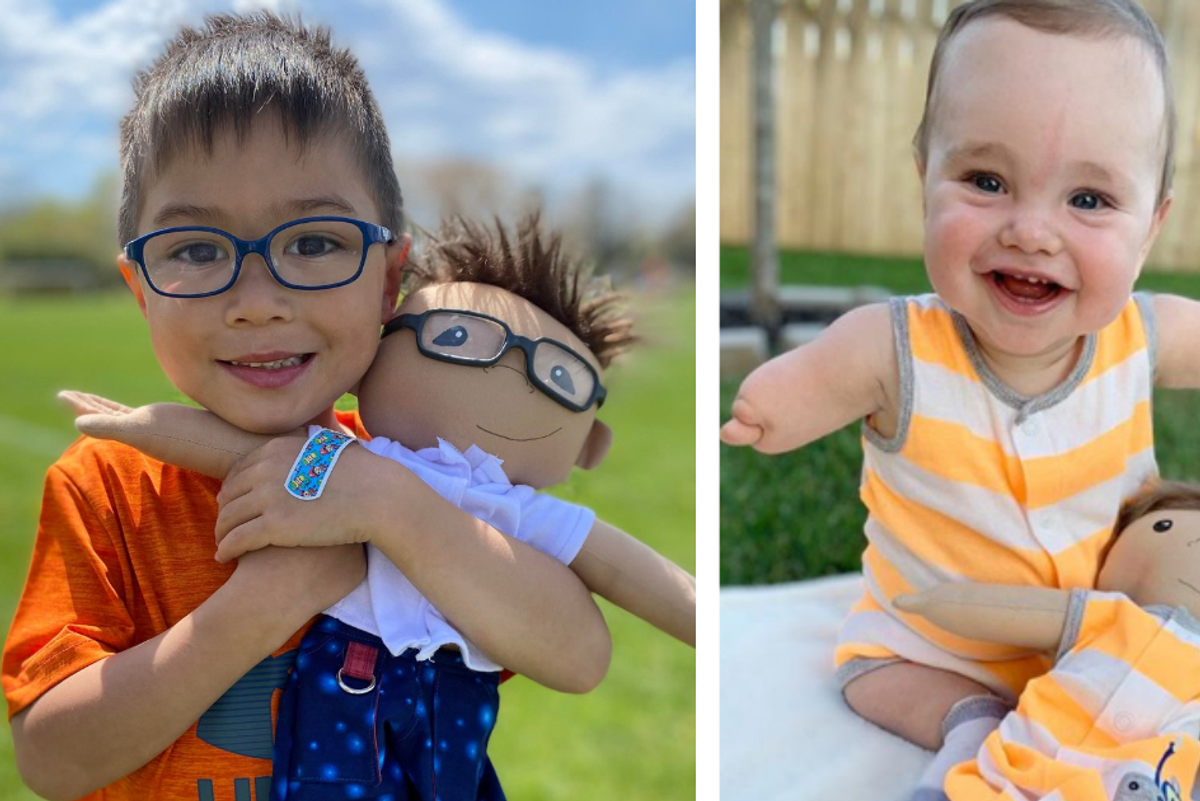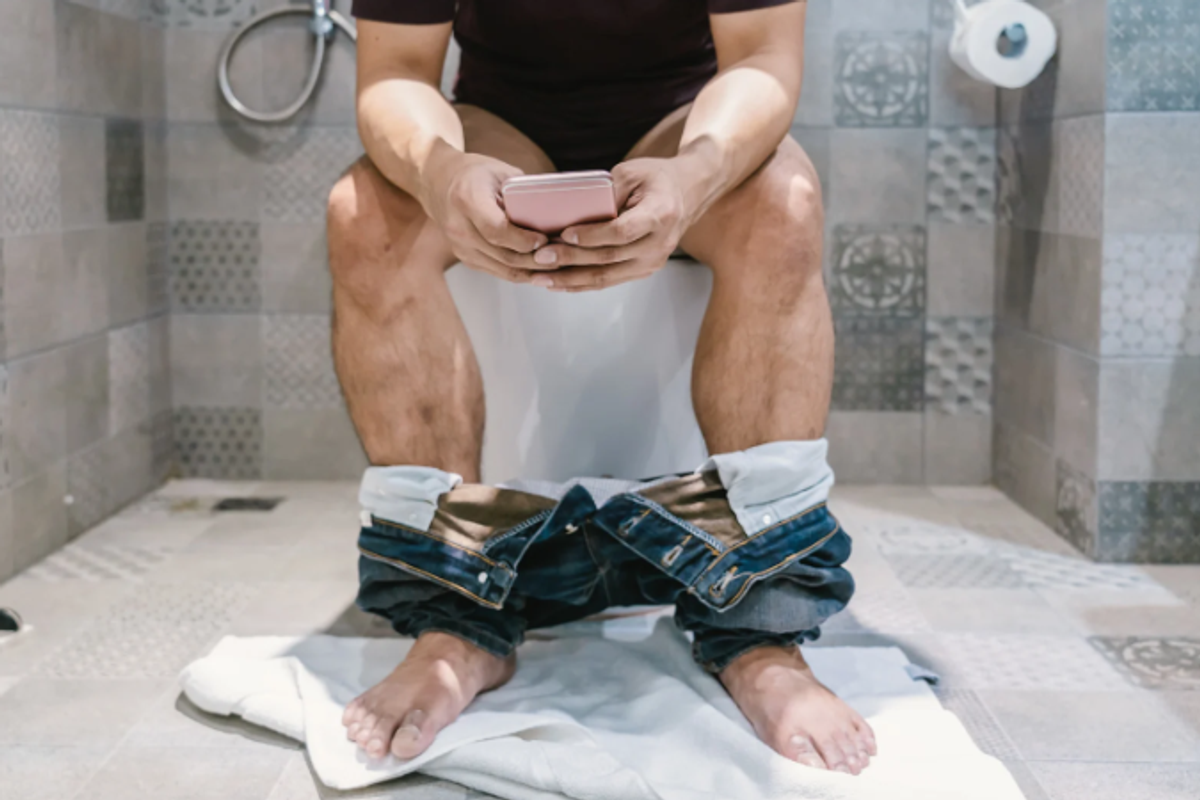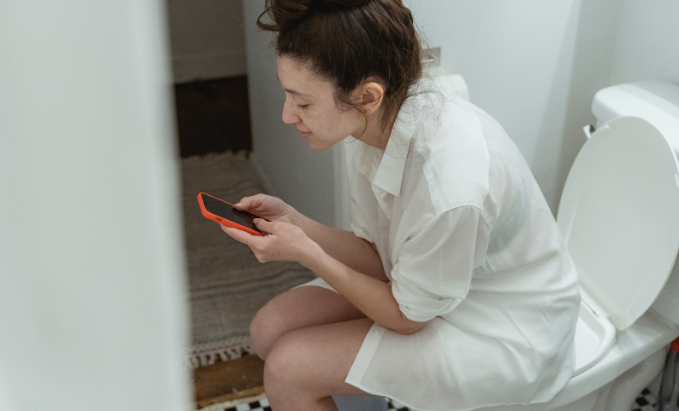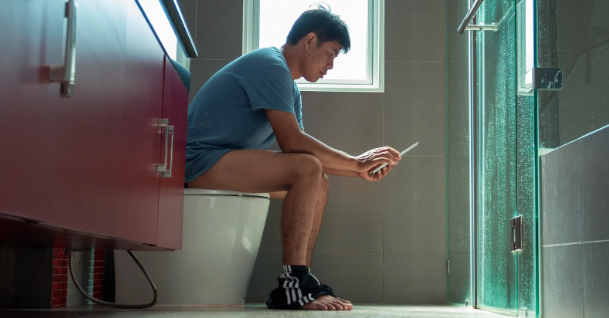This doll maker gives every child a custom, handmade doll that looks exactly like them

Growing up, the kinds of toys you play with can make all the difference. When I was a child, I always felt like the way I looked was wrong because there were no dolls, cartoon characters, or actresses that looked like me. Thankfully, things are changing. Bigger companies like Mattel are now producing dolls in different shapes, genders, and skin tones.
But gaps in the market still exist, especially for kids with special needs, physical disabilities, and skin disorders. That's where Amy Jandrisevits comes in. With her A Doll Like Me line, Amy makes it her personal mission to make custom dolls for kids who typically don't see themselves on store shelves. For some of these children, seeing themselves in human likeness is life-changing.

As a former pediatric oncology social worker, Amy used play therapy in order to help children adjust to situations that felt out of their control. This was difficult to do when none of the dolls she had access to looked like the children she worked with.
"Play therapy is how kids work through all of that, and dolls are an integral part of the process," Amy says. "For someone who doesn't have the privilege of seeing him or herself in the places that matter, a doll that looks like them can be so validating."
Amy's childhood love of dolls combined with her passion for social work have allowed her to turn her A Doll Like Me campaign into a nonprofit, something she never could have imagined. She's sure that her 8-year-old self would be thrilled at the thought of using dolls to change a narrative for so many children.

"I am a doll-maker who feels that every child, regardless of gender, ethnicity, age, medical issue, or body type, should look into the sweet face of a doll and see their own," she writes on the GoFundMe page for her project. "I talk a lot about changing the narrative, changing who we see and how we see them. Imagine what representation and inclusion look like from a child's perspective. When they see themselves in the places that matter, that becomes an inclusive message, and that is what shapes a child's self-concept. Diversity and representation in dolls can be a game changer for children."
Amy is doing her part to make sure every child – ones with limb differences, albinism, cancer, birthmarks, scars, burns – feels valued. Her goal is to normalize, represent, and validate, and at a very basic level, to offer something that is soft and cuddly and provides comfort when a child needs it most.

To date, Amy has made over 450 dolls and every single story is as heartwarming as the next. Dolls are typically requested by parents or caregivers, but in recent years, Amy has received requests from doctors and teachers, because they realize the therapeutic value in play. And thanks to its nonprofit status and donations from GoFundMe, not one family has had to pay for their own doll.
"Sometimes I know that the child who is about to receive the doll is living on borrowed time and when he or she dies, this is going to be even more important for their family."
Amy says that she never takes this doll-making opportunity for granted and she often uses her platform to talk about what inclusion and representation look like for a child. She believes that it is her personal obligation to advocate for the children that she is privileged to know.
"We all bring a skillset to the table and we need to understand that sometimes small gestures impact other people in ways we cannot begin to fathom. We have a multitude of reasons to NOT do something – 'I'm too busy, broke, old, young, sick, afraid' – but there are even more reasons why we CAN, and should, do something."

Donate to Amy's GoFundMe and help a child see themselves as they are through a hand-crafted doll.
Helping someone in need is as easy as a click away. Check out our fundraising toolkit and start a GoFundMe that gives back to your community.



 In a 4-day model, kids often (but not always) receive less instructional time. Photo by
In a 4-day model, kids often (but not always) receive less instructional time. Photo by 


 A woman looking at her phone on the toilet.via
A woman looking at her phone on the toilet.via  A man looking at his phone on the toilet.via
A man looking at his phone on the toilet.via 